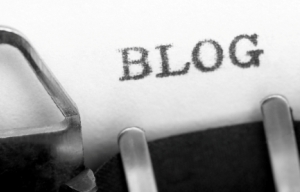Steph Curry Injury Shocker: What It Means for the Warriors’ Playoff Run
Stephen Curry, the cornerstone of the Golden State Warriors, has been ruled out of Game 1 of the Western Conference semifinals due to a left hamstring injury. This development comes as a major concern for the Warriors and their fans, as Curry has long been the team’s primary offensive catalyst and emotional leader. The injury occurred during the second quarter of the first game against the Minnesota Timberwolves, a crucial matchup in the postseason. Curry, who had already scored 13 points in just 13 minutes, was seen reaching for his hamstring while attempting to contest a rebound. Moments later, he exited the court visibly limping and did not return.
Medical evaluations later confirmed that Curry had suffered a hamstring strain, although the severity has not been fully disclosed to the public. Hamstring strains are graded on a scale from I to III, with Grade I being the mildest and Grade III the most severe, involving a complete tear. The Warriors medical staff has yet to release an official timeline for Curry’s return, but sources suggest he could be sidelined anywhere from a week to several weeks, depending on the severity and how well he responds to rehabilitation and treatment.
Despite the absence of their superstar, the Warriors pulled off a gritty 99-88 win over the Timberwolves in Game 1. The team leaned heavily on veteran leadership and bench depth. Buddy Hield stepped up in a significant way, scoring 24 points and knocking down five three-pointers. Jimmy Butler contributed a double-double with 20 points and 11 rebounds, while Draymond Green played a crucial two-way role, adding 18 points and 8 rebounds. The Warriors also benefited from a lackluster shooting performance by Minnesota, who missed all 15 of their three-point attempts in the first half and managed just 31 points in that span—the second-lowest in franchise playoff history.
Curry’s injury presents a tactical and psychological challenge for Golden State. Offensively, Curry’s gravity on the court cannot be overstated—his ability to shoot from virtually anywhere forces defenses to stretch and opens up lanes for teammates. Without him, the Warriors must rely on more structured offensive sets and hope for consistent shooting from their supporting cast. Players like Andrew Wiggins, Donte DiVincenzo, Jordan Poole, and Jonathan Kuminga will need to elevate their performances to fill the scoring void.
Poole, in particular, may take on an increased role, as he has shown flashes of brilliance during prior playoff runs. Though sometimes streaky, he is capable of explosive scoring nights and has the confidence to take on responsibility. The Warriors coaching staff, led by Steve Kerr, will also need to adjust their rotations and potentially shift the team’s offensive philosophy to suit a Curry-less lineup.
Defensively, the Warriors were already a solid unit, but they will need to be even more cohesive. Draymond Green will continue to anchor the defense, providing communication, rim protection, and versatility. Butler’s presence as a two-way star becomes even more critical, as he can create offense and defend the opposing team’s top perimeter players.
This injury could not have come at a worse time for the Warriors, who are emerging from a grueling seven-game series against the Houston Rockets. Fatigue and minor injuries are already factors for many teams this deep into the postseason. Curry’s absence intensifies the pressure on the rest of the roster and magnifies the importance of each possession and game.
The series continues with Game 2 scheduled for Thursday. Without Curry, the Warriors will aim to build on their Game 1 success and maintain their momentum. The Timberwolves, likely to make adjustments and improve their shooting, will look to capitalize on Curry’s absence. Golden State must remain locked in and execute their game plan with precision if they hope to hold off Minnesota’s young, athletic squad.



No comments:
Post a Comment